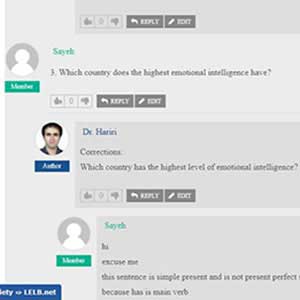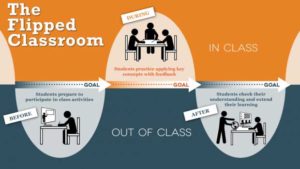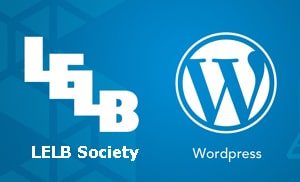Round table activity is aimed at providing an exceptional opportunity for English and Persian learners to practice both synchronous and asynchronous learning at the same time.
The coinage of round table activity
The founder and designer of LELB Society, Dr. Mohammad Hossein Hariri Asl, first thought of the round table activity and coined this term in 2016 when he was working on his PhD dissertation with the following title:
Interactivity and Social Presence: Two Ingredients for Creating an Effective Online Learning Communities
The adoption of this term lies in King Arthur’s legendary round table which he and his knights used to sit at in order to discuss important and complicated issues. As its name suggests, King Arthur’s round table didn’t have any special angle to indicate the superiority of any of the participants, even King Arthur himself.
Watch this video
Evidently, the round shape of King Arthur’s table is a perfect testimony to the fairness of his meetings. While I was working on my PhD thesis, I was trying to be a fair teacher in our online classes and trigger classroom interaction in a nonchalant manner.

As a result, I mindfully made a simile between King Arthur’s round table and our online conversation class lasting for over a year with 42 IELTS candidates as the participants of my study. This is because I didn’t want to dominate the conversations or lead the course of our conversations to any specific dimensions.
What is round table activity?

In this activity in online education, students are asked to study an assigned lesson before the online or synchronous class. The assigned lesson generally includes a video or podcast as well. This is a typical example of flipped learning in which the class time is not used for lecturing by the teacher.
Language learners read the assigned text and watch the embedded video in the lesson before the live class. This can happen to the learner’s convenience and as many times as they wish, thanks to asynchronous learning.
The teacher mindfully violates initiation-response feedback (IRF), making room for student interaction occurring in the asynchronous channels of communication, namely discussion boards and comment forms.
Each student is expected to leave at least one fresh comment or question and reply to one of the existing comments or questions. As predicated, there will be at least dozens of interactive comments and replies in response to the assigned topic or lesson.
Accordingly, the round table activity can perfectly account for an amalgamation of both synchronous learning and asynchronous learning in online learning environments.
Skill integration and round tables
The round table activity proposed by Dr. Mohammad Hossein Hariri Asl can perfectly promote skill integration in a very natural and inspiring manner. If implemented correctly, it has the potential to make the process of learning so natural that, on many occasions, the learners would actually forget that they are learning a foreign language.
The following sentences can outline the mechanism of implementing skill integration with the help of round tables:
- The students read a passage before the class asynchronously. (reading practice)
- They listen to any word or phrase by selected any text with the help of our installed text-to-speech software. They also watch the embedded video or podcast before the class. (listening practice)
- The students can learn vocabulary in context and learn vocabulary with images, thanks to your built-in visual dictionary and thesaurus in context. (vocabulary improvement)
- The students practice writing and grammar indirectly by participating in our comment forms at the bottom of each lesson. (writing practice)
- In the end, the students practice speaking on their own written comments in the form of questions and answers in our online classes. (speaking practice)
Asynchronous learning and round table activity

Unlike synchronous learning, asynchronous learning can greatly benefit the students who need to have flexibility in their learning schedule. This is because they don’t need to be online or attend online classes to continue learning. Consequently, the students can slow down or accelerate their own ideal learning pace to their own convenience.

In our round table activity, the core of learning is shaped asynchronously. As an educator, I’m really a big fan of asynchronous learning because, apart from its flexibility, it generally augments student reflectivity and awareness. To prove this, the students can watch or listen to an embedded video or podcasts as many times as required before synchronous classes.
They can take notes or watch the subtitles comfortably without being afraid of falling behind. They can absorb and digest the material and even conduct further research if necessary.
Flipped learning and round table activity

Flipped learning can provide the learners with an exceptional opportunity to be involved in both in-class and out-of-class activities. For out-of-class activities in online education, the students have this chance to access the teacher’s lecture or presentation in the form of videos or podcasts before the class.
As a result, the teacher doesn’t need to teach the content or material over and over for each class, and the class time could tremendously be saved for more challenging and problem-solving activities in synchronous or live classes.
The implementation of round tables in online classes on the basis of flipped learning can benefit the learners in many ways. In fact, round tables can facilitate flipped learning because it provides an additional level of student interactivity and reflectivity to any usual flipped classroom that lacks round tables.
Furthermore, more learner autonomy is expected of the students because IRF is consciously discarded. In other words, the learners should take charge of their own learning by questioning and answering each other asynchronously in the comment forms or discussion boards and discussing the accumulated points synchronously in live classes.
Collaborative flipped learning

Round tables can spark an even more elevated type of flipped learning, which I call collaborative flipped learning. In the ordinary type of flipped learning, the students might not necessarily experience collaborative learning. In contrast, individualization tends to be on the spotlight.
On the other hand, by implementing round tables in flipped classrooms, we can turn the spotlight on student interactivity rather than individualization. In fact, the students need to collaborate with each other asynchronously in the comment forms and forums to provide the content for an informed discussion in the following live classes.
As a consequence, independency is replaced by interdependency or social autonomy through collaborative flipped learning. It is important to note that interdependency is a more mature level of autonomy compared to sheer learner autonomy or independency.
Social presence and round table activity

The term, social presence, in online education refers to the learners’ shared feelings of trust and belongingness toward the social context in which learning occurs and also toward their classmates. In order to realize social presence in online venues, the following two requirements should first be met:
- Student interaction patterns or interactivity must be optimized in order to give rise to collaborative learning.
- Students must develop more active and responsive roles in learning and a sense of belongingness to the learning environment.
The role of the teacher in round tables
The teacher’s role in round tables is similar to King Author’s role in his round tables. That is to say, to ignite and encourage more classroom interaction among the learners, the teacher takes a neutral position. Even the initiation-response feedback (IRF) is consciously ignored by the teacher.
Contrary to IRF, in the round table activity, the students are expected to initiate the chain of questions and answers in the form of comments and replies taking place in the asynchronous comment forms and forums.
How to implement round table activity?
First of all, I should admit that round table activity cannot be prescribed to any language learner. We have tested this activity for years, and realized that this does not work greatly for young learners below puberty. Another group of learners to whom round table activity is not recommended is elementary students.
This is because of the fact that in the former group, the students are not cognitively mature enough to transcend the independency level and reach for social autonomy; and in the latter group, elementary students fail to self-regulate their learning yet, for they need constant assistance.
Content-based instruction

To practice round tables in your online classes, first you need to employ content-based instruction (CBI) in your teaching methodology. CBI makes an excellent choice for discussion or conversation classes. Your students will find the course interesting and inspiring if you mindfully select challenging questions and useful topics for discussion.
Keep in mind that the students will be bored with cliched topics or themes, and consequently, will not participate in leaving comments or replies in the discussion boards. What’s more, they might end up quitting your course and finding a replacement.
Robust website infrastructure

The round table activity and collaborative flipped learning in online education require a social context with a reliable and robust web server and up-to-date technology. Otherwise, when the number of students grows, your server will not be able to accommodate dozens or hundreds of students participating in asynchronous activities.
In addition, website speed these days is one of the ranking factors stated by Google. As you might know, LELB Society is on WordPress, and we are feeding hundreds of English and Persian students. The round table activity is technically our principal activity, and for this reason, we have optimized our WordPress speed and user experience (UX) to the maximum level.

According to our students’ testimonials, both English and Persian students at LELB Society are 100% satisfied with their user experience and our nested or threaded interactive comment forms. That’s why we’ve responded to over 5,000 text and voice comments in our asynchronous forums.
Conclusion
In this section, I’m going to wrap up all the benefits that could be derived from the implementation of round tables in online language classes:
- It gives more flexibility to the students in terms of their learning schedule in this busy era.
- It can encourage meaningful and deep learning as the students can conduct further research to bridge the gap and gain more educated insights.
- It promotes skill integration in the most natural and practical way.
- It can provide the students with an optimum level of learner autonomy, particularly thanks to asynchronous learning.
- The out-of-class activities in the asynchronous version of our round tables give so much confidence to the students, especially those who are shy. This optimum level of confidence is rooted in the stress-free atmosphere of commenting and replying at any student’s convenience.



